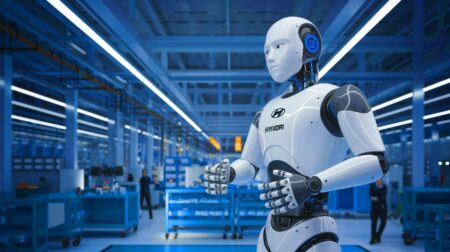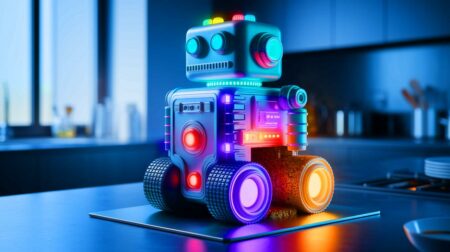In the rapidly evolving world of technology, robots are increasingly becoming a part of our daily lives. One of the latest innovations capturing attention is Atom, a humanoid robot developed by Dobot Robotics in China. Atom is designed to assist in the kitchen with remarkable precision and adaptability, marking a significant milestone in the evolution of humanoid robotics. As the demand for robots capable of performing domestic tasks grows, Atom’s entry signifies a new era where humanoid robots might soon become common household assistants.
The Humanoid Kitchen Assistant
Dobot Robotics, established in 2015, has gained recognition for its groundbreaking work in collaborative and educational robotic arms. With Atom, the company ventures into the humanoid robotics market. Atom’s standout feature is its ability to perform culinary tasks with impressive precision, such as perfectly toasting bread and delicately handling ingredients like lettuce and cherries. One of Atom’s unique characteristics is its capacity to provide a customized culinary experience by memorizing user preferences, from the desired level of toastiness to beverage choices.
Atom is equipped with 28 degrees of freedom and a precision of ±0.002 inches, enabling it to perform tasks requiring great delicacy. Its right-knee design reduces energy consumption by 42% compared to traditional bipedal robots, allowing it to navigate efficiently on challenging terrains. Atom’s adaptability and precision make it a remarkable addition to any kitchen, potentially transforming how we approach cooking and meal preparation.
The Expanding Robotics Market
Atom’s introduction to the market highlights the increasing interest in robots capable of operating in dynamic environments. Although Dobot has not yet specified the target markets for its humanoid robot, video demonstrations showcase its potential for domestic use, particularly in the kitchen. This trend aligns with the growing competitiveness of the home robotics sector. Among other market players, 1X Technologies AS has unveiled the humanoid robot NEO Gamma, designed for seamless integration into homes with smooth movements and enhanced communication.
Meanwhile, other companies are focusing on commercial applications: Agility Robotics is collaborating with renowned firms to deploy its humanoids in logistics and manufacturing, while Apptronik has secured substantial funding to expand its commercial robotic operations. This flourishing market indicates a future where robots will play a significant role in both domestic and industrial settings, reshaping the landscape of robotics.
Key Features of Atom
| Feature | Description |
|---|---|
| Precision | ±0.002 inches |
| Degrees of Freedom | 28 |
| Energy Reduction | 42% compared to traditional robots |
| Motor | Robot Operator Model – 1 (ROM-1) |
The Impact of Robotics on Our Lives
The expanding field of humanoid robotics promises to significantly transform our lives. Atom, with its learning and adaptive capabilities, paves the way for a new era where robots do more than just execute tasks—they interact and adapt to human needs. The collaboration between Figure AI and OpenAI to develop communication capabilities between humans and robots underscores the growing importance of artificial intelligence in this evolution.
As technology continues to advance, the role of robots in domestic and industrial environments is broadening. Companies are exploring applications in both home and industrial settings, shaping a constantly evolving robotics landscape. The question remains: how far can this technology go, and how will it reshape our everyday lives?
The advancements in robotics, as illustrated by Atom, provoke thoughts about the future of human-machine interaction. As humanoid robots become increasingly integrated into our lives, what new opportunities and challenges will emerge for modern societies?
Did you like it? 4.4/5 (28)








Wow, can Atom make pancakes with the perfect amount of fluffiness? 🥞
How much does this robot cost? I might need to start saving up!
This is amazing! But can Atom handle making a full English breakfast? 😂
What happens if Atom malfunctions while cooking? Is it safe? 🤔
I hope Atom can make coffee as well as it makes toast!
So, is this the end of chef jobs as we know it?
Thank you for this insightful article! The future seems promising with Atom. 😊